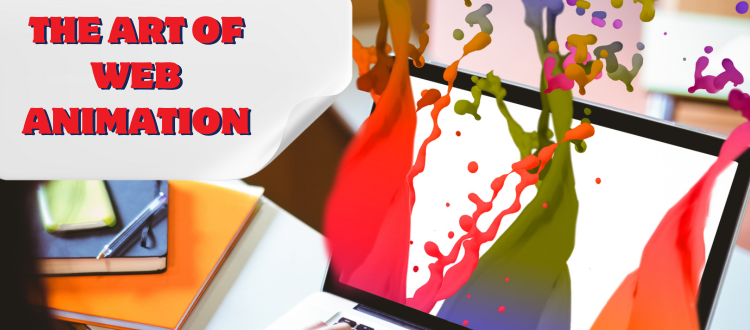Introduction
In today’s digital age, websites have become an integral part of our daily lives, serving as primary platforms for information, communication, and commerce. Web designers are continually seeking innovative ways to enhance user experience and engage visitors. One such tool that has gained prominence in recent years is animation. Animation in web design is not just about creating visually appealing websites; it plays a significant role in improving user engagement and usability. In this blog post, we’ll explore the multifaceted role of animation in web design and how it can benefit both users and website owners.
Enhancing User Experience
1. Captivating Visuals: Animation brings websites to life by adding movement, which instantly captures visitors’ attention. Eye-catching animations can make a memorable first impression, making your website stand out from the competition.
2. Storytelling: Animation is a powerful medium for conveying stories or messages. Animated elements, such as info graphics and micro-interactions, can help clarify complex information and guide users through a website’s content.
3. Engagement and Interactivity: Animated buttons, hover effects, and transitions encourage users to interact with the website. This interactivity can create a more immersive and enjoyable browsing experience.
Improving Usability
4. User Guidance: Animation can be used to guide users’ attention and actions. For example, subtle animations can lead the user’s gaze toward important content or provide feedback when a form is submitted.
5. Page Transitions: Transitions between pages or sections within a website can be made smoother and more seamless with animations. This prevents users from feeling disoriented and lost during navigation.
6. Loading Animations: Rather than staring at a blank screen, users appreciate loading animations that inform them the website is still functional. These animations contribute to a more positive user experience.
Conveying Information
7. Data Visualization: Animations are instrumental in presenting data and statistics engagingly and understandably. Dynamic charts, graphs, and visualizations can help users comprehend complex information quickly.
8. Call-to-Action (CTA) Emphasis: Animations can draw attention to CTAs, prompting users to take specific actions. A subtle button animation or a pulsating call-to-action can increase click-through rates.
Aesthetic Appeal
9. Brand Personality: Animation allows for creative expression and the reinforcement of a brand’s identity. The choice of animation style and effects can evoke specific emotions and resonate with the target audience.
10. Consistency: Animated elements can help maintain a cohesive design throughout the website. Carefully chosen animations can tie different sections together and create a unified user experience.
Performance Considerations
11. Optimization: While animation can greatly enhance a website’s visual appeal, it’s crucial to ensure that it doesn’t negatively impact page load times. Optimizing animations is essential to strike a balance between aesthetics and performance.
12. Responsiveness: Animations should adapt to different devices and screen sizes to provide a consistent experience. Responsiveness is key to accommodating a diverse range of users.
Conclusion
In the realm of web design, animation is a versatile and valuable tool. When used thoughtfully and purposefully, it can elevate the user experience, improve usability, convey information effectively, and enhance the overall aesthetic appeal of a website. However, it’s essential to strike a balance between animation and performance, ensuring that the website remains fast and responsive. With animation, web designers can create more engaging and dynamic online experiences that captivate visitors and leave a lasting impression. As technology and design trends continue to evolve, animation is set to play an even more significant role in the future of web design.



